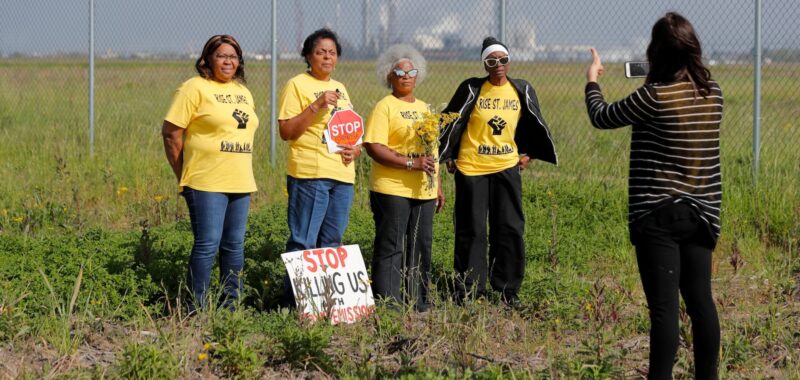NEW ORLEANS, La. — A genealogist scoured historical records for years to establish the identities of enslaved people who she believes are buried on the grounds of a planned $9.4 billion plastics facility in southeast Louisiana.
The effort is part of a long-running battle by local community groups, often descendants of enslaved people who worked plantations in St. James Parish and neighboring parishes, to halt industrial development and protect their cultural heritage.
Lenora Gobert’s research — published Monday by the environmental organization Louisiana Bucket Brigades and local community group Inclusive Louisiana — identified five enslaved people named Stanley, Harry, Simon, Betsy and Rachel who had died at a former plantation now slated for a massive facility owned by Taiwan-based Formosa Plastics Group.
The five enslaved people were between the ages of 9 and 31 when they died. Gobert’s research shows most had been mortgaged multiple times by the plantation’s owners.
Few records exist containing details about their lives besides financial documents revealing how their owners leveraged them to generate more wealth, Gobert said. She believes the five enslaved people recorded as dying at the plantation were likely buried there due to plantation customs.
St. James and neighboring parishes have hundreds more potential burial sites of enslaved people, according to research from London-based research agency Forensic Architecture, which studied maps and aerial imagery to identify geographic “anomalies” indicating possible graves.
The Formosa property has at least one site with human remains, according to a 2020 archaeological report commissioned by the company. The report also stated that guessing the origins of the remains was “only speculative and possibly inaccurate.”
Formosa initially reported in 2018 that an archaeological survey it commissioned found no burial grounds. It later withheld information about the discovery of at least one burial site for more than a year, activists have said.
Formosa has said it included details about the cemetery and other potential graves in documents made available during the project’s permitting process.
The company had considered removing and reinterring the human remains elsewhere, according to public records procured by environmental activists. Community groups in St. James have fought to keep the remains there.
Formosa “has always been committed to respectfully protecting the remains found on our property in St. James Parish,” said Janile Parks, director of community and government relations for FG LA L.L.C., a member of the Formosa Plastics Group. Parks noted the company has since fenced the burial site for protection.
In 2022, an East Baton Rouge district judge canceled the company’s air permits. She cited both the anticipated pollution and the importance of land believed to contain the remains of enslaved people. But in January, Louisiana’s First Circuit Court of Appeal overturned the ruling and reinstated the company’s permits.
Gobert said much more could be done by companies, state agencies and local authorities to proactively identify, protect and honor these burial sites.
“Why are the enslaved people so much less that they don’t deserve to have protection?” Gobert said.

